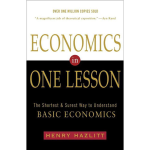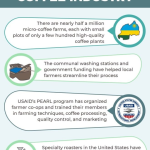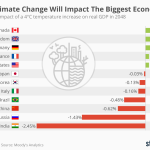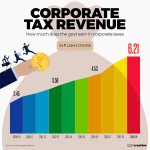Navigating the commercial real estate challenges has become increasingly daunting as the landscape shifts dramatically in the wake of pandemic-induced changes. High office vacancy rates are gripping major cities across the U.S., with many regional hubs reporting rates as high as 23%. This alarming trend, exacerbated by the elevated impact of interest rates, raises serious concerns among financial experts about potential instability in the banking sector. With an uncertain U.S. economic outlook and the risk of bank failures looming over the horizon, stakeholders are left grappling with market dynamics that seem to be spiraling out of control. As commercial real estate faces a perfect storm of declining property values and a wave of loans maturing by 2025, the implications for investors and consumers alike cannot be overstated.
The real estate sector is currently confronting significant hurdles, particularly in the commercial sphere. The challenges of leasing office space have intensified, especially with persistent high vacancy rates affecting urban centers. Furthermore, fluctuating interest rates continue to reshape how financial institutions evaluate and manage their assets. Concerns about the overall economic climate in the United States and the ripple effects from potential bank failures complicate the recovery landscape. As the market grapples with these evolving trends, stakeholders must adapt to navigate this complex environment effectively.
The Impact of High Office Vacancy Rates on Economic Stability
The significant rise in office vacancy rates in major cities across the U.S., now hovering around 12% to 23%, raises valid concerns regarding the stability of the economy. High vacancy rates weaken overall property values and can lead to a decrease in local business revenue, particularly in urban centers that rely on foot traffic from office workers. This downturn can create a cascading effect, as businesses dependent on a robust office market may struggle, resulting in layoffs or even closures that contribute to a rise in unemployment. Consequently, significant economic repercussions may ensue, affecting consumer confidence and spending.
Moreover, this situation complicates the landscape for lenders and investors who possess commercial real estate holdings. With a considerable amount of mortgage debt coming due—about 20% of the $4.7 trillion countrywide—the potential for widespread financial distress is looming. Lack of demand for office spaces, coupled with rising interest rates, may lead to alarming levels of delinquency in loan repayments. If financial institutions start grappling with a surge in non-performing loans, it could spark a broader economic downturn, dragging regional economies down further.
Navigating Commercial Real Estate Challenges Amidst Fiscal Uncertainty
Navigating the complexities of commercial real estate today is riddled with challenges, particularly regarding the high office vacancy rates observed post-pandemic. Investors who once saw commercial properties as safe harbors for capital are now in peril as the values of these assets decline. This decline not only tarnishes the balance sheets of individual investors but also casts shadow over the portfolios of larger institutional investors, such as pension funds and insurance companies, who have substantial stakes in commercial real estate. With a sharp rise in vacancies, many properties are expected to lose significant equity, leading to an uncertain future for these investments.
Additionally, as interest rates continue to rise, refinancing becomes a more daunting task. Many investors, having previously over-leveraged their properties under the assumption that interest rates would remain low, are now reeling from the implications of a changing financial environment. The Federal Reserve’s reluctance to lower interest rates further intensifies this difficulty, posing a credible risk of increasing loan defaults that could have a ripple effect throughout the banking sector. As commercial real estate faces these challenges, the potential for economic disruption looms large, highlighting the importance of strategic and prudent financial planning.
The Role of Interest Rates in Shaping Real Estate Market Trends
Interest rates play a pivotal role in shaping trends within the real estate market, especially in the commercial sector. As the Federal Reserve maintains a firm grip on interest rates, property values continue to be adversely affected, making it difficult for investors to maintain profitability. The mounting pressure is particularly concerning as many real estate loans are set to mature in the coming years, with lenders fearing an uptick in potential delinquencies. The impact of these rising interest rates is vast, influencing everything from borrower sentiment to investor confidence, ultimately driving market trends and behaviors.
Furthermore, the correlation between interest rates and property demand creates a complex web for investors and developers. As borrowing costs increase, potential buyers might delay purchasing decisions or shift focus toward more affordable investment opportunities. Coupled with persistently high office vacancy rates, the landscape for commercial real estate is fraught with uncertainty. Stakeholders must remain vigilant in monitoring interest rate trends and ready to adapt their strategies accordingly, aiming to mitigate the risks associated with an unstable economy.
Understanding the U.S. Economic Outlook Amid Bank Failures
The U.S. economic outlook is in a precarious position as the specter of bank failures looms, particularly among regional banks heavily invested in commercial real estate. If a cascade of defaults were to materialize, it could trigger a credit crunch, subsequently hampering economic growth. Kenneth Rogoff, an esteemed economist, highlights that while large banks are well-regulated and fortified against significant economic downturns, smaller banks may not have the same resilience. The failure of regional banks could diminish consumer confidence and spending, creating a ripple effect that would extend beyond the financial sector.
At the same time, the economic backdrop complicates these systemic risks. A robust job market and a thriving stock market provide a buffer against the potential fallout from a distressed commercial real estate sector. It’s essential to recognize that while certain financial institutions may falter, broader economic indicators remain strong. Therefore, while the path ahead is fraught with threats from possible bank failures and a troubled real estate market, the overall outlook does not suggest an immediate financial crisis, provided that the existing economic momentum is sustained.
Long-Term Consequences of Commercial Real Estate Debt Maturity
The looming maturity of substantial commercial real estate debts poses significant long-term consequences for the financial landscape. With a staggering 20% of the $4.7 trillion mortgage debt coming due, the impending challenge of refinancing these loans amidst high interest rates raises concerns among lenders and investors. Should many borrowers struggle to meet their obligations, the fallout would ripple through the banking sector, increasing the risks of delinquencies and potentially leading to severe liquidity issues for financial institutions. This scenario could catalyze broader economic repercussions, manifesting in reduced lending, tighter credit conditions, and ultimately a dampened consumer spending environment.
Furthermore, the ripple effect would not be confined to the real estate sector alone. The resulting strain on banks, particularly smaller institutions less disposable to financial regulations, might ignite fears of a broader banking crisis reminiscent of the 2008 financial meltdown. In contrast, larger banks, with their diversified portfolios and better risk management practices, might weather these tests more effectively. However, the lack of activity in the commercial real estate market, especially if large numbers of properties depreciate in value, has the potential to alter the investing landscape dramatically, making recovery efforts more daunting for stakeholders across the board.
Exploring Solutions to Mitigate Real Estate Investment Risks
In facing the rising specter of commercial real estate challenges, stakeholders must proactively explore solutions to mitigate investment risks. A significant starting point is advocating for policies that encourage financial flexibility, such as the introduction of refinancing initiatives aimed at easing the burden on borrowers. Encouraging dialogue around potential adjustments in zoning laws could also facilitate the conversion of vacant office spaces into alternative uses, thereby revitalizing neighborhoods while assisting in reducing the overall vacancy rates. These measures could be instrumental in sparking renewed optimism in the commercial real estate sector.
Additionally, fostering partnerships between private investors and public entities could enhance collaborative efforts to address the systemic challenges facing the market. By working together, stakeholders can identify innovative strategies to repurpose underutilized spaces while offering investors viable options in uncertain times—essentially breathing new life into dormant properties. Through a combination of regulatory support and cooperative investment strategies, it is possible to navigate these trying times and lay the groundwork for a more resilient commercial real estate market.
The Burden of High Interest Rates on Regional Banking Systems
Rising interest rates impose significant burdens on the regional banking systems, particularly those anchored by substantial exposure to commercial real estate loans. With many of these loans originating during a period of historically low rates, the current interest climate impacts their profitability, as banks are faced with the harsh reality of loan defaults and shrinking asset values. This scenario not only threatens the stability of regional banks but also raises broader concerns about consumer lending and economic growth. Stricter lending conditions could emerge as institutions brace for potential losses, dampening economic activity.
Moreover, the Federal Reserve’s actions regarding interest rates directly influence regional banks’ strategic decision-making. As the cost of borrowing increases, the profitability of lending decreases, forcing banks to reassess their risk exposure. This cautious approach could lead to tighter credit markets, making it more challenging for consumers and businesses to access financing. In turn, reduced lending can adversely impact economic resilience, making it imperative for policymakers to consider effective strategies to support these banks and stave off a more significant economic crisis.
Forecasting the Future of Office Space Needs Post-Pandemic
As the workforce adjusts to post-pandemic realities, forecasting the future of office space needs emerges as a pivotal challenge for commercial real estate stakeholders. Businesses, reassessing their operational strategies, now demonstrate a preference for hybrid working models, which significantly reduce the demand for traditional office spaces. This transformation evokes uncertainty in the sector, as the previous demand dynamics fade and inflated vacancy rates linger. Developers need to adapt their strategies accordingly, considering how to repurpose or redesign office spaces to entice tenants back.
Moreover, the shift in consumer behavior and workplace expectations necessitates a reimagining of what office spaces can offer. Properties that incorporate modern amenities and prioritize employee health may find favor in this new landscape. Consequently, as some segments of the market thrive while others falter, balancing perceptions of value and utility will become paramount for landlords and developers. The real estate market must evolve to reflect these changing priorities, ensuring that while traditional office space may see a decline, new opportunities can emerge from the shifting tides of the post-pandemic economy.
Frequently Asked Questions
How are high office vacancy rates impacting the commercial real estate market?
High office vacancy rates are significantly affecting the commercial real estate market by depressing property values across major U.S. cities. As businesses reduce their need for office space, demand drops, leading to increased vacancies and a downturn in rental income for property owners. This phenomenon raises concerns regarding the future profitability of office investments and can trap owners in unprofitable scenarios.
What is the impact of interest rates on commercial real estate investments?
The impact of interest rates on commercial real estate investments is profound, especially as rising rates increase borrowing costs for loans. Investors who leveraged low-interest rates in the past are now facing challenges as refinancing becomes more costly. This scenario can lead to higher vacancy rates and diminished property values, posing risks to investors and lenders alike.
How does the U.S. economic outlook affect commercial real estate challenges?
The U.S. economic outlook plays a crucial role in shaping commercial real estate challenges. A strong economy can bolster job growth, increasing demand for office space. Conversely, economic downturns can lead to higher vacancy rates as businesses reduce their workforce and scale back operations. Ultimately, the economic outlook influences both the demand for commercial properties and investor sentiment in the real estate market.
Are bank failures related to commercial real estate challenges?
Yes, bank failures can be linked to commercial real estate challenges, particularly during periods where a significant volume of real estate loans mature and the economy faces downturns. If many borrowers default on their loans due to high vacancy rates and rising interest expenses, regional banks, which are often heavily invested in commercial real estate, could see their financial stability jeopardized.
What are the current real estate market trends related to commercial properties?
Current real estate market trends indicate a troubling decline in office space demand, with many cities reporting high vacancy rates. Additionally, as interest rates remain elevated, investors are becoming more cautious, leading to a slowdown in new developments and acquisitions. Trends also show a polarization within the market, where high-quality properties attract investment while lower-quality assets struggle to find tenants.
| Key Point | Details |
|---|---|
| High office vacancy rates | Office vacancy rates in major U.S. cities range from 12% to 23%, affecting property values. |
| Impact on banks | Surge of commercial real estate loans maturing by 2025 raises concerns about bank losses and potential failures. |
| Comparison with 2008 crisis | Although there are risks, a repeat of the 2008 financial crisis is not anticipated due to better regulations. |
| Over-leveraged investments | Investors assumed low interest rates would persist, leading to over-leveraged positions before rates increased. |
| Potential for regional bank failures | Smaller, less regulated banks face bigger challenges with commercial real estate investments. |
| Broader economic impact | Regional banks’ challenges could affect consumer spending and lending conditions, but a robust job market prevails. |
Summary
The commercial real estate challenges are becoming increasingly significant as we approach a potential crisis driven by high office vacancy rates and maturing loans. The demand for downtown office space has dropped dramatically, leading to high vacancy rates which, combined with a struggling economic climate, may result in significant pressures on the banking system. Experts warn of cascading effects if not addressed, though a complete economic meltdown akin to 2008 is not deemed likely. It’s essential for stakeholders to be aware of these dynamics to navigate the complexities ahead.










